Whelp, I guess this is now a travel blog. For the holidays, my wife and I traveled to Istanbul to spend time with my family. Neither of us had been to Turkey before, so every prior conception of this place was about to be challenged. I kept joking that my only frame of reference was the iconic picture of the Hagia Sophia in the afternoon, and thus, Istanbul was dusty, arid, and perpetually bathed in the late afternoon sun. Seeing how we arrived in winter it was cloudy or rainy for at least half of our trip, and I found out that the sun does actually set there.
I was surprised by a number of things in the landscape of Istanbul. First, there are skyscrapers and high-rises everywhere, and more are being constructed every day. Second, Istanbul is a huge city. It literally spans two continents and is packed with almost 20 million people. Third, I didn’t know what so many mosques would look like. I knew that as a Muslim Majority country (99.9%), there would be a lot of mosques, but I guess I never took the time to imagine what it would look like. I’m from SoCal where there is a church on almost every corner and a mega church on every other corner. Living in England, I have noticed that there are several pretty and ornate churches in every city. In Istanbul, there are large, ornate mosques all over the city, and in between them, slightly smaller ornate mosques. And while church bells might ring on Sunday morning, the call to prayer goes out five times a day, where a man cries out the basic tenets of Islam. This call to prayer reverberates throughout the entire city seemingly causing time to stop as the men of the city hurry to the mosque to pray. This strange phenomenon is the ordinary for them.
Perhaps the best part of our trip was our little vacation within our vacation. We took a six-hour road trip to Selçuk or better known as Ephesus. On our way down we stopped in Izmir and saw some ruins of the ancient city of Smyrna (Revelation 2:18) and visited the Church of St. Polycarp. This 17th-century church was dedicated to the early church father who was burned at the stake in Smyrna for his faith. His martyrdom is depicted on the ceiling of the church.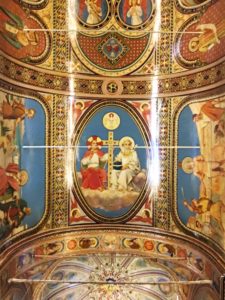
In Ephesus, we got to take the whole tour, seeing the amphitheater, the Library of Celsus, the terraced houses, and much more. Unfortunately, my Greek was a bit rusty (understatement of the year), and I could only pretend to read the inscriptions. We got to see the traditional burial place of John the apostle in the ruins of a 6th-century basilica and even saw the hill where he may have written his gospel (which became a Byzantine/Ottoman castle). On our way back to Istanbul, we got caught in traffic, so we decided to just pop into Thyatira for a little (Revelation 2:18). It was certainly not as cool, but three out of seven of the churches in Revelation isn’t bad!
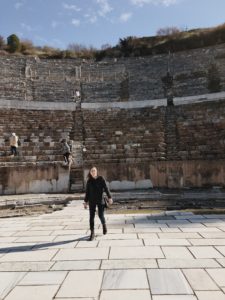
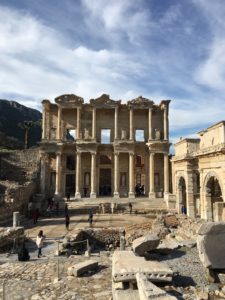
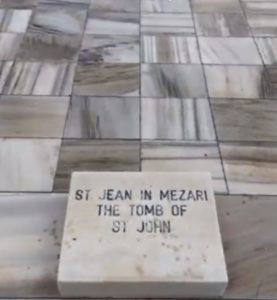
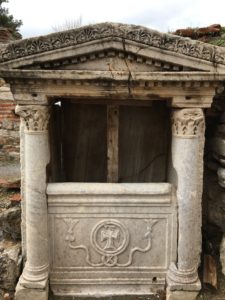
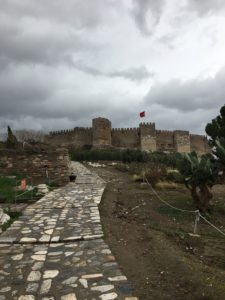
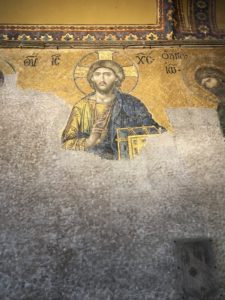
In Istanbul, we got to see some of the major sights. We got to explore the Hagia Sophia, see the Blue Mosque, and get lost in the Grand Bazaar. In addition to all of the amazing food, we found out that my family lives in Kadıköy, or as it used to be called Chalcedon. We had hung out and explored the very place where the fourth ecumenical council (451) took place without even knowing it! This event aptly sums up Turkey – a place with so much history that it is easily forgotten.
Our trip was colored by a theme of “being Forgotten.” More positively, Turkey is “In need of attention.” We were told during our tour of Ephesus that the excavations had only uncovered 16% percent. On our short walk through the ruins of Thyatira, we were horrified that many of the ruined walls and pillars had graffiti upon them. The lack of historical churches in the region displays that the Ottoman Empire almost wiped clean the history of the region, while the lack of rudimentary knowledge of Christianity reveals that most of the church was washed away with its history.
One of the more depressing moments of the trip occurred during our road trip. A thought struck me after we had been driving for a few hours – statistically, we had driven past city after city, and town after town, in which no one ever heard the gospel. Almost everyone that I saw in Istanbul, most likely, has never heard the gospel or really knows who Jesus is. A country that held several key centers of early Christianity, has completely forgotten the past, and its people have been left relatively unattended to.
These thoughts made me think about my own work as a student and future scholar. I care deeply about the relevance of my work for the life of the church, but have I considered its relevance for the mission field? If discipleship of all peoples is the aim of the Church’s mission, shouldn’t the Academy be producing scholars who take up this same mission? While there are plenty of academics concerned with the theological results of their work in the life of the church, it seems that the mission field is often neglected. I believe for many, including myself, that the Church’s mission – to disciple all people by teaching them to obey all that Jesus commanded – is not our mission. We study, read books, write a dissertation so that we can teach (hopefully), but our vision rarely includes the layperson, much less the unreached – those who have never heard of Jesus. Of course, there will be insider language and academic jargon, but are we able to articulate our work in both layman’s terms and to the nonchristian? Would any non-believer actually understand your work? Why bother writing another article on Paul if we have no vision for the people living in the very cities where he preached and established churches? Why write yet another book on the pastoral leadership of 1 Timothy if those truths won’t be received in Selçuk? How do we as students and scholars reform our research aims to reflect the mission of the Church?
For that answer, we must look at our history and our own faith. Christianity spread throughout the world in the early centuries by the work of Spirit-empowered believers. The Kingdom of God advanced through suffering and the blood of the martyrs, as they followed in the footsteps of Jesus. It was the community of believer’s action, most notably their love for their neighbors and the poor, that brought others into that community. Our faith spread through faithful preaching, and early Christian teachers studied in response to pagan criticism and believer’s questions. Scholarship had at its focus, not simply the church, but the world and the discipleship of the unreached. We must remember our history in order to engage the future. We cannot toil in our studies for our own self-glorification, making great our own name in the process. As Christians in scholarship, our aim must be to glorify God, which must mean making Jesus’ name great to all people, especially those who have never heard it.

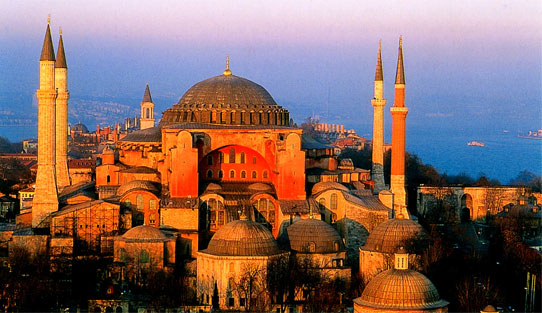



Leave a Reply
Your email is safe with us.